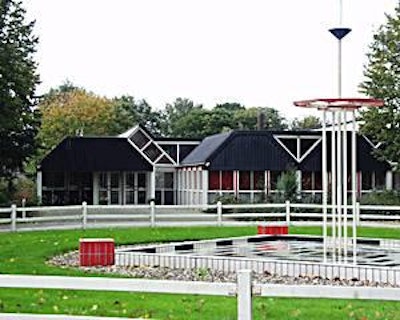
Schothorst Feed Research can trace its history back over 75 years. Based in Lelystad, the Netherlands, the centre is undergoing a major investment to expand its facilities and the services it offers to clients.
While it is a given that demand for food, and consequently feed, will continue to rise, it is not simply volumes that are expected to grow. A better understanding of how ingredients work, and of alternative ingredients, is also increasing in importance.
Schothorst Feed Research (SFR) is an independent private company, owned by both private and co-operative feed companies and by a foundation established to stimulate research.
Its main areas of activity include the development of feed evaluation systems, raw material evaluation for various animal species, and the effect of feed technology on nutrient utilization.
Alongside this, SFR also looks at the development of nutritional requirements of high production livestock, the relationships between feed quality and the quality of animal products and the effect of feed on animal health and gastro-intestinal disturbances.
Taking into account the growing environmental demands placed on agriculture, SFR also looks at the effect of feed on the environment and output of nitrogen, phosphorous and methane.
Additionally, Schothorst Feed Research has experimental facilities to test the efficacy of feed additives and their effect on animal health.
Active across dairy, pigs and poultry the centre has 10 staff working in quality management and 50 in research, and has made a number of predictions as to how the feed market will develop over the next couple of years.
Market trends
SFR notes that the major themes in the current market are: competing demands from the feed, food and fuel industries; the availability of feedstuffs and by-products; increasing scarcity of starch; nutrition and the wellness of man and animals.
Research director Piet van der Aar, comments: “We expect that demand for feedstuffs will become more important, and there will be ever-more emphasis on the co-products of other industries.”
He continues that as the energy component of feed determines the price of these co-products, their use is expected to become more important worldwide. It is not only this group of ingredients that will grow in importance, but also their processing - either technologically or enzymatically - to increase their energy value.
This forecast upturn in demand has been the driver for the ongoing investment programme at SFR.
Investment
This year, two new research farms, one for dairy cows and one for laying hens, will come into operation. Both facilities will comply with the latest requirements for sustainable farming, allowing statistically relevant nutrition research to be carried out in on-farm conditions.
Additionally, SFR has plans for the extension and improvement of its pig facilities, which should be ready by 2012. In total, some Euro 9 million (US$12.2 million) is being invested.
The new layer farm and research facilities will be unique, and comprise a commercial house equipped for research with two separate areas each with 40 different groups of 330 hens, to enable accurate statistical nutrition studies.
The new dairy cow facilities, with 220 lactating dairy cows, will result in a doubling of SFR’s dairy research capacity. In the plans for this facility, there is the possibility of an extension up to 340 lactating cows.
Competing demands
SFR currently has contracts with the compounding feed industry and suppliers in 14 countries, but calls on its expertise are expected to increase.
Dr van der Aar says: “While local feedstuffs may always be the preferred choice, we particularly foresee greater interest from regions that are feedstuff importing, for example Europe and Asia.”
SFR has developed feed additive formulation tables that can be used for the development of commercial feed formulations, and it also has methods to calculate the nutritional value of raw materials that can vary in composition and to measure other quality aspects of animal nutrition related to feed composition.
Dr van der Aar explains: “We have built a data file for the last 75 years. However, we have seen an increasing interest in evaluation of raw materials, and there are several reasons for this.
“Raw materials are not the same as they were in the past. This can be either due to genetic changes in the raw materials themselves, or due to changes in production processes. Products with the same name may not have the same nutritional value as they did 20 years ago. Because of this, we see an increasing interest in feedstuff evaluation.”
Over the last few years, SFR has introduced new energy tables for sows, piglets, and laying hens, and these new tables are more targeted than their predecessors. The advantage of this is that more precise feeds can be made at lower ingredient cost.
While the economy in many parts of the world remains sluggish, offering value for money – and keeping an eye on costs – is central to many businesses and achieving value for money from inputs key.
And as demand for meat and feed rises, the pressure on producers to achieve the best possible results will increase in tandem, meaning that a proper understanding of each and every ingredient that goes into feed cannot be ignored.
“The understanding of raw materials has changed. We now know why some have positive effects and some negative effects. In the past we may have thought that some were bad, but now we understand limitations,” continued Dr van der Aar.
And as to the future?
“If you look to the future, we will start to evaluate things in new ways. For example, there will be more account of health and immunosuppression, and greater quantification of the relationship between the quality of raw materials and end products,” he adds.




.jpg?auto=format%2Ccompress&fit=crop&h=167&q=70&w=250)











